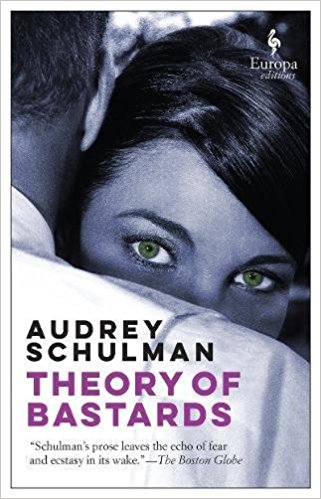You have /5 articles left.
Sign up for a free account or log in.
 Theory of Bastards Paperback by Audrey Schulman
Theory of Bastards Paperback by Audrey Schulman
Published in April of 2018
Let me be super clear. The future is good. The arrow of time soars toward progress.
Life in 2050 will be better than it is in 2018. Take whatever variable you care to measure of human well-being, and in 30 years that outcome will be better than today.
On a population level, the US will be healthier and wealthier. We will live longer and live better. Diseases that today are lethal, such as many types of cancer, will be chronic and manageable.
We may live in a less equal society in 2050 than we do today, but on average everyone will be wealthier. When it comes to material goods, health, nutrition, transportation, and entertainment - the poor of 2050 will look most like the middle class of today.
In 2050 we will look back on all of our 2018 anxieties about technological change with amusement and wonder. The robots did not actually end up taking all the jobs. AI did not try to wipe out the humans.
We will get in our self-driving vehicles and wonder how we ever tolerated living with the carnage of human driven automobiles. The 40,000 Americans dying each year in car accidents will seem as outrageous and barbaric to our 2050 selves as 19th century child labor seems to us today.
I could go on (a cleaner environment, cheaper energy, better TV shows, etc.) but I will not. You either believe this vision of the future - based on all the data we have about the last 200 years of economic and social progress - or you don’t. We will know when we know.
This all brings me to a book recommendation.
Theory of Bastards is one of those rare dystopian novels with a plausible and convincing dystopia. The bleak future is convincing.
The date when Theory of Bastards takes place is never given (I think) - but around 2050 sounds right.
In that future, Google is gone - replaced (or renamed) Quark. (My bet is that Quark is the result of an Amazon / Google merger, but that is not in the book). Our phones have been replaced by implants. The dream of screens in our eyes and audio feeds in our ears has finally been realized. The always on voice controlled information overlay and ubiquitous internet of things has finally arrived. Cars are self-driving.
On the downside in Schulman’s future, the environment has gone to shit. Droughts, crop failures, extreme weather events, and large-scale dust storms are the new normal. Food can finally be printed from 3D printers, but it tastes terrible.
Despite my foregrounding the future in talking about Theory of Bastards, the future in the actual book is largely in the background. Schulman does not make too much of the future. She does not oversell it. The future in Theory of Bastards in the context, not the story.
And wow, what a story.
I haven’t mentioned the bonobos yet. The book is really about bonobos. And about sexual attraction. And how humans and apes mate, and why we do so.
I learned more about the science of infidelity and the details of primatology from this novel then any number of nonfiction books about the subject.
There is just lots of science in Theory of Bastards.
There is also one of the best main characters - a scientist and MacArthur genius award winner named Dr. Francine Burk (Frankie) - to appear in any recent novel. (Dystopian or not).
This is also a story about pain, the pain of endometriosis. A disease that I knew almost nothing about before reading Theory of Bastards, and after one I think I know quite a lot.
Read this book if you like a book with a good story. If you like thinking about the future. If you like science and scientists do their work. If you want to learn about chronic pain. If you are interested in the science of attraction. If you are fascinated by bonobos. If you want to pick up a book that you will not want to put down.
What are you reading?








